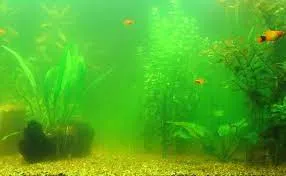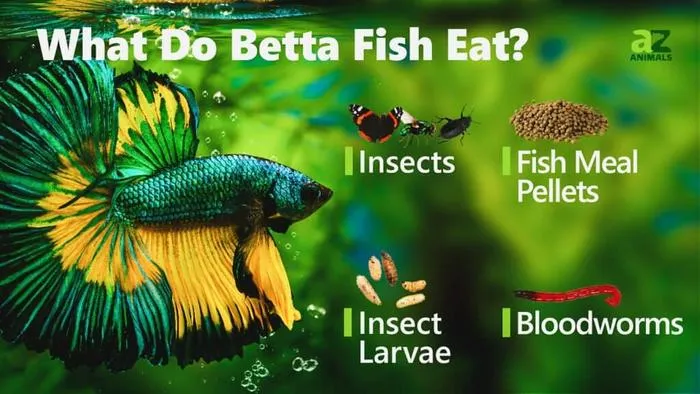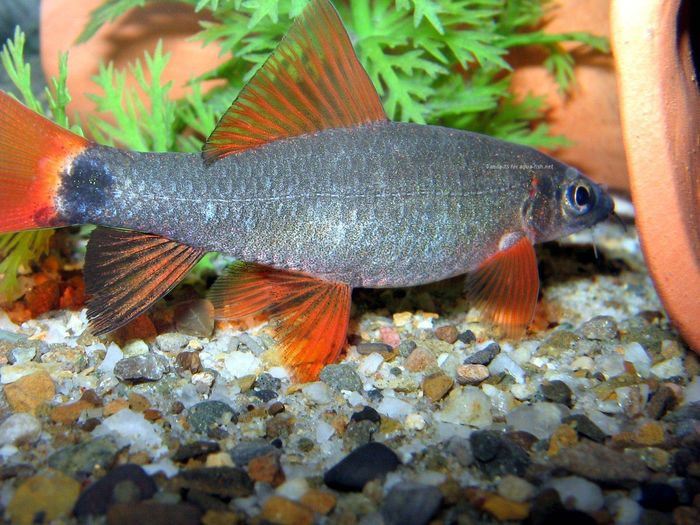Snowball Pleco is a beautiful freshwater fish that flies under the radar in an aquarium. They come from such a popular family that everyone seems to consider.
There is a lot to like when we come to this breed. These are beautiful, easy to care for. Patterns on these fishes make them beautiful. There is something to the simplicity and contrast that makes them fun to look at!
This guide will show you how to properly care for snowball pleco and provide space where they can breed.
If you are looking for a peaceful and small snowball pleco for your community fish tank, Snowball Pleco (scientific name: Hypancistrus inspector) is for you. This freshwater fish is perfect for all aquarists.
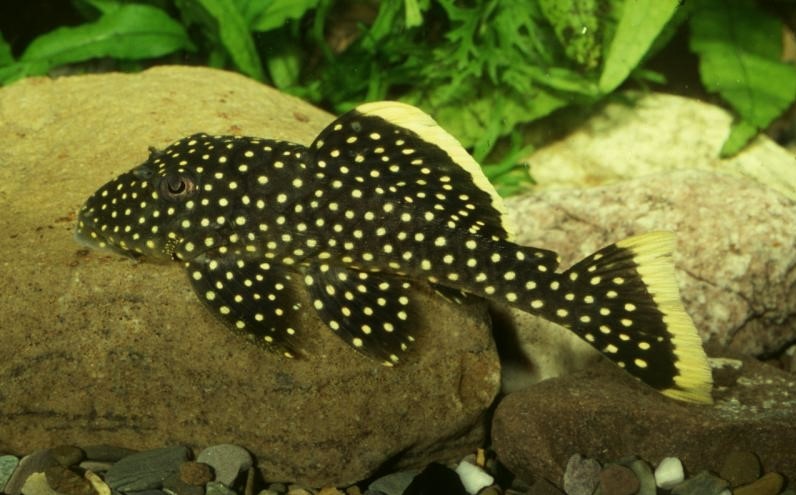
Snowball pleco comes from the Rio Negro in Venezuela, the world’s largest blackwater river. Thanks to the unique water conditions of its natural habitat, snowball pleco needs some unique care requirements.
Fortunately, this fish is quite tolerant and adapt easily to life in captivity. You can also grow in your fish tank with proper care and guide!
Snowball Pleco Care
Caring for snowball pleco isn’t really that difficult. As we said before, they adapt well life in an aquarium.
However, there are still some bases you need to cover. Like Zebra Pleco fish, the snowball has some unique needs that you should pay attention to grow. Doing so can help your fish reach its full potential and live a long, happy life!
1) Lifespan of Snowball Plecos
Generally, the lifespan of a healthy snowball pleco is between 8 and 10 years. It is actually a little shorter than Bristlenose Pleco. It depends on the stable water conditions and proper devotion for the fish to develop.
Without good care, they can quickly fall prey to diseases, resulting in dramatically shorter lifespans. It means if you are planning to own snowball plecos, proper care is vital.
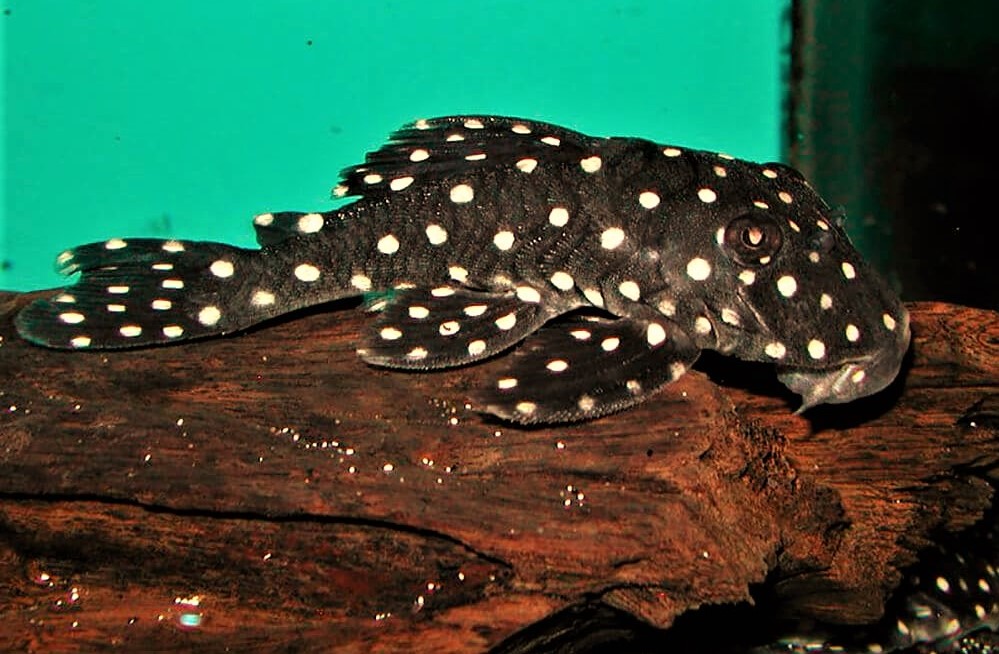
2) Average Size of Snowball Pleco
The average snowball pleco size is around 5.5 and 6.3 inches when fully grown. Compared to other popular types like Royal Pleco, snowballs are actually much smaller.
3) Physical Appearance
Snowball plecos are beautiful creatures with a familiar shape. They have the same iconic pleco profile. These include a flat abdomen and a torpedo-shaped outline.
Like other plecos, pectoral and pelvic fins are gifted in the snowball. They also have a huge triangular dorsal fin. You can see the fish standing on these fins giving a unique look.
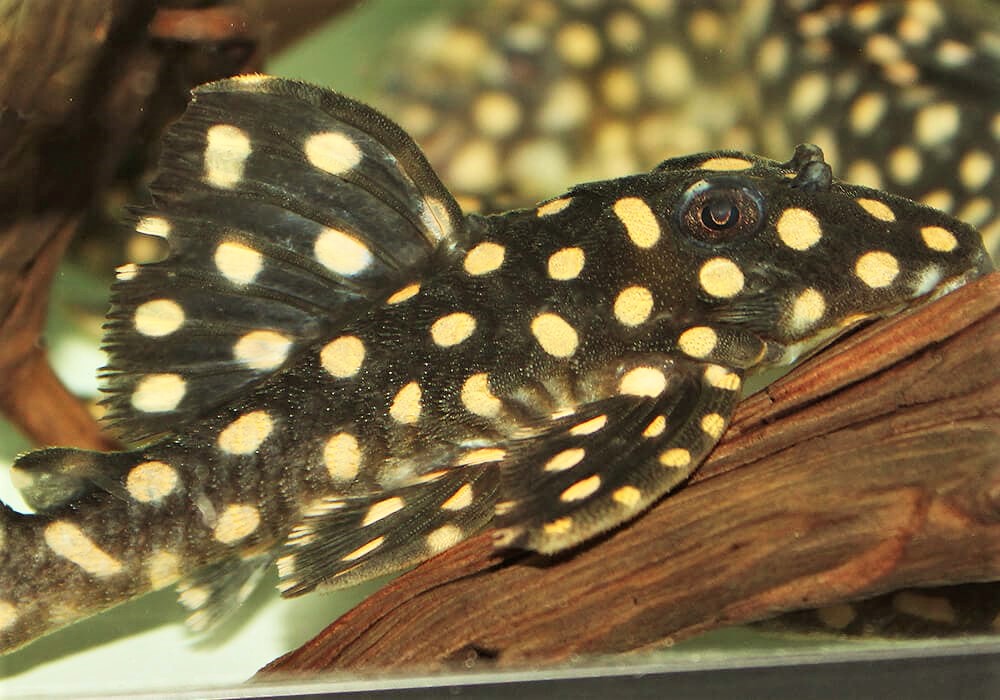
The base color of the snowball pleco is dark gray or black. Males may have a dark brown color with a slight reddish touch. For both males and females, the base color is prominent with white or pale-yellow polka dots!
These dots cover the whole body. You can find them everywhere on the fins, on the head and in between! They give a nice contrast to the overall dark look of the fish.
It is very easy to see the difference between males and females. Males usually have a reddish tone on them. Females are plumper and more rounded.
4) Tank Size for Snowball Pleco
Let’s start with the size of the tank! Thanks to their small size, you don’t have to plan ahead for large-scale growth like other plecos.
This fish can live in an aquarium that holds as little as 40 gallons. If you are planning to build a community tank, it is better to give more space available for this fish to live.
In fact, you have to find how long do fish live in an aquarium? Most of the snowball plecos keep lasted a long time in a large tank. There is something about the extra room that makes a big difference.
5) Water Parameters For Plecos
Snowball pleco comes from an interesting natural environment. Rio Negro is darker, mimicking tea-stained water. This particular color is caused by the falling objects of the plant at the bottom of the river.
Unique water composition comes with a darker color. Water is relatively soft, but it is more acidic. These fishes can tolerate water on the neutral side, but they do best if they have a slight acidity in their environment.
To keep your snowball plecos healthy, recreate water conditions as closely as possible. Buy an aquarium thermometer and water kit to make sure the following parameters are stable at all times.
- Water temperature: 72°F to 86°F
- pH levels: 5.0 to 7.6 (somewhere in the middle is ideal)
- Water hardness: 6 to 10 dKH
It is a good idea to test the water more frequently when you first get this fish. This will help to determine the consistent parameters when adjusting your fish.
What to Put in Aquarium?
You can set up your tank with simple decorations and artificial ornament. The best way to keep your snowball plecos happy and healthy is to create a natural environment that mimics the Rio Negro.
These fishes are bottom-dwellers, so they will spend most of their time exploring the lower reaches of the water. Pay special attention to the bottom of the tank.
Start with a nice sand substrate. Sand is soft and safe for snowball plecos. It’s the perfect material for plants and natural décor.
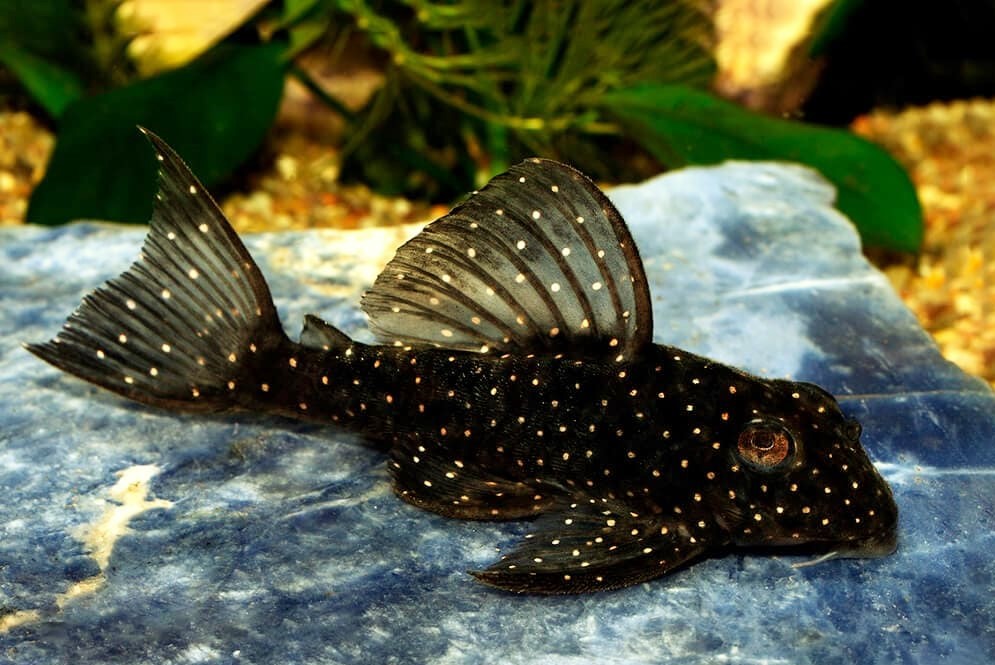
On top of the substrate, place several cave-like decorations. You can make caves out of driftwood and rocks. Artificial caves also work well. Feel free to create your own caves with the uprooted plants if you want.
A nice range of tunnels and caves is important to explore. These fishes need hiding places to feel safe. Also, they will play an important role in the breeding process.
Next, add plants! You can make the most of any freshwater plant species, so mix things up and be creative! Snowball plecos are not known to uproot plants, so you can use anything that suits the biotope.
To keep water in good condition, use a strong filtration system. In fast-moving rivers such as the Rio Negro, water conditions remain good, as waste is washed away. The water in your filter must circulate effectively to prevent ammonia and nitrate levels from rising too high.
Related Post: Multiple Cycle to Clean An Aquarium
Common Diseases in Snowball Plecos
There are no special diseases that specifically target snowball plecos. But these species can suffer from common diseases that affect other freshwater fishes.
They do not have the traditional scales as you see on other fishes. Instead, they have plates like hard armor. This makes them slightly more sensitive to water chemicals, salts, and bacteria. Most likely, this will allow them to experience the symptoms of infectious diseases a little faster.
The most common illness that worries you is Ich. This highly contagious disease causes white spots all over the body. Generally, you can only use copper-based medicines to take care of the problem. However, these species are particularly sensitive to copper.
Because of this, you have to keep them separate and treat the water condition manually and naturally. The same thing is good for fungal infections, bacterial infections, and parasites. Fortunately, there are some pleco-approved drugs that you can use to treat diseases.
As always, if you are not sure how to proceed, do not hesitate to consult your veterinarian.
Diet and Food for Snowball Plecos
Snowball pleco eats a variety of foods. They are naturally omnivorous.
Outside of the feeding time, you can probably see these fishes snapping down on the biofilm. Contrary to popular belief, they are not the best algae eaters. They may enjoy algae once in a while, but will not consume it as quickly as other species in their family.
They prefer a different diet with both protein and plant-based foods. You can give standard sinking pellets or algae wafers as a base.
For breakfast, try Brine Shrimp or Daphnia and Blood worms. You can also provide vegetables such as:
- Cucumber
- Blanched peas
- Spinach
- Zucchini
Provide only the food that your fish eats in a few minutes. No one will survive to ensure that the water does not sour too quickly.
Temperament and Behavior
Snowball plecos are not very social. Most of them will pay no attention to the other fishes in the tank. Mostly, this specie will stick to himself and spend most of his time hiding in caves.
However, they become more social around the breeding season. There is a clear incentive to go out and communicate with each other!
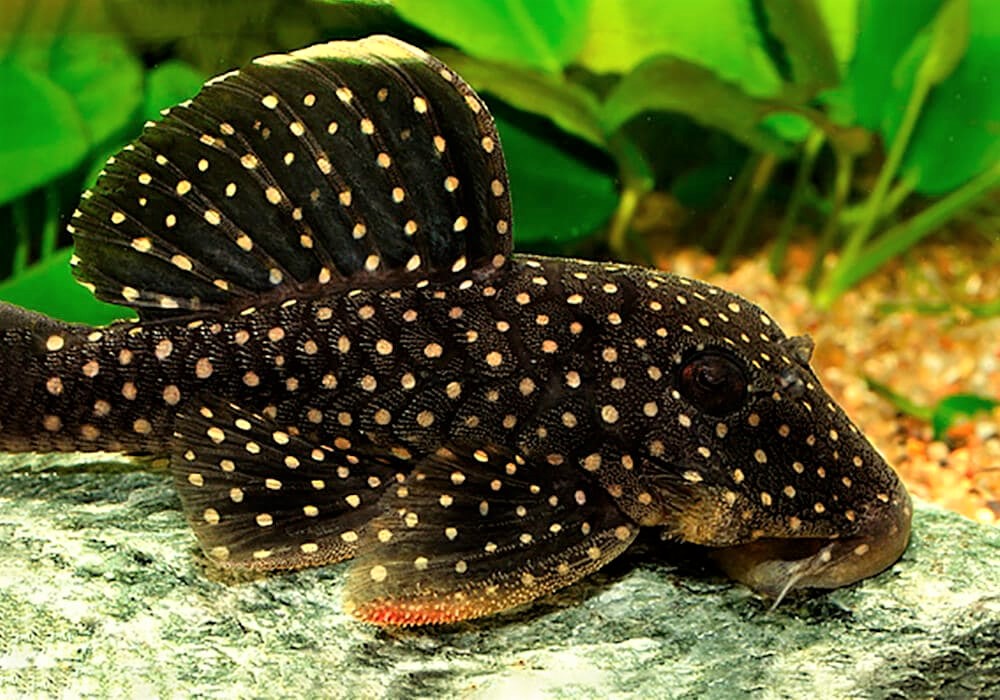
We do not recommend keeping male plecos together. Showing male territorial aggression in the same tank. Females work well with males. If you plan on having more than one aquarium, make sure you have the right combination.
Finally, these fishes are nocturnal, so don’t expect to see more of them during the day. They will rest in dark caves until the sun comes up.
Tank mates For Snowball Plecos
You have a lot of options when building an open tank. Try to choose other peaceful species that live in the upper parts of the aquarium.
Snowball plecos will ignore the mates of their fish tank. So, you don’t have to worry about issues as long as every fish in the tank is peaceful.
Here are some good tank mates for snowball plecos:
- Different tetra species (we recommend the Rummy Nose and Ember)
- Rusty Cichlid
- Celestial Pearl Danio
- Different types of snails
- Discus
- Pygmy Cory
- Different shrimp species Like Crystal Red Shrimp, Bamboo Shrimp, Amano Shrimp, Blue Dream Shrimp
Snowball Plecos Breeding
Breeding snowball plecos hit or missed. These fishes are already breeding in captivity, but you have to put a lot of effort into providing the right conditions.
Set up a separate breeding tank with native water conditions. Make sure there are large caves in the tank.
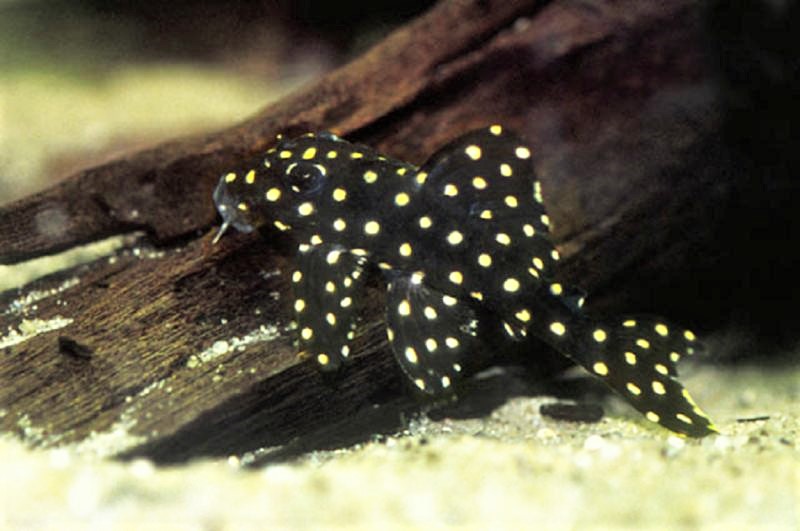
After placing a pair of snowball pleco in the tank, urge the fish for breeding with food. Provide plenty of live or frozen food for the best results. If the procedure is successful, you will know that the female will become with the egg. After that, she will lay eggs in the cave (after examining it for a while). The male will protect the egg. The eggs will hatch after a week.
The newly hatched fish eat their egg sacs. Bronze shrimp and vegetables give as food. These foods will provide the essential nutrients to facilitate growth.
HOW LONG DO SNAILS LIVE IN A FISH TANK?
Caring for snowball pleco is good for beginners or anyone who doesn’t want high-maintenance fish. The combination of their beauty and ease of care is really hard to beat! We highly recommend this fish if you are still in the mood to get one. These species will definitely become one of your favorites. If you have any other questions about these fishes before you buy, we are more than happy to connect. Just send us a message through our site and we’ll respond as soon as possible.
Final Words

